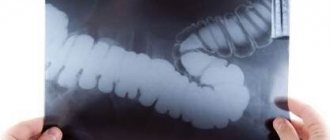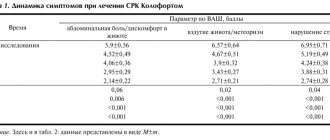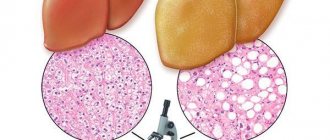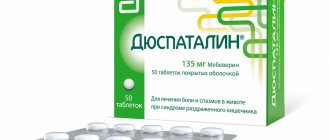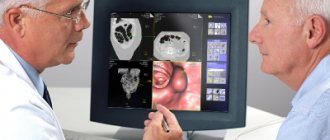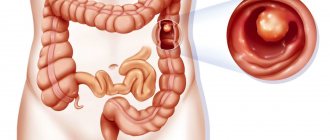In the hustle and bustle of life, we do not always pay attention to the signs that the body gives us; moreover, we do not immediately notice even its requests for help. One of the common symptoms of many diseases is colorless stool. Below we will look at the main reasons for its appearance, but please note: most often, colorless feces appear with serious liver diseases, including hepatitis, being one of its characteristic signs. And for any type of hepatitis, it is important to start treatment on time to avoid the disease becoming chronic, which can result in cirrhosis of the liver. It’s better to play it safe and see a doctor right away, without expecting that all the unpleasant signs of the disease will go away on their own.
In order to answer the question of why colorless feces suddenly appeared in a person, it is worth understanding how it is colored. It is considered normal if the stool is brown (light brown, dark brown). This is due to its composition, which includes digested food and processed bilirubin. If the process of removing bilirubin from the body is disrupted, the stool becomes discolored. The fact is that bilirubin comes from the liver to the intestines along with bile. There it is converted into a new substance, the pigment - stercobilin, which has a golden brown hue. If the supply of bilirubin stops, the pigment substance ceases to be produced, and the stool loses its brown color.
Nutrition
However, when you see colorless stool, you should not immediately start to panic. Its appearance can be caused by various reasons, some of them completely harmless. For example, having come to the village to relax in the summer, everyone unanimously attacked the fat cottage cheese, sour cream, and cream. And also homemade butter and lard... And now there’s a deviation from the norm. Therefore, if you notice changes, you should think about your diet and observe changes in stool color for several days. If you change your food, everything will return to normal in a couple of days.
How to determine intestinal disease by stool?
During an appointment with a gastroenterologist, when asked: “How long have you paid attention to the results of the gastrointestinal tract?”, many patients, blushing, look away. It's not shameful!
In our opinion, it is much sadder if you have never looked at your feces. Such observations are a very important method of self-diagnosis and diagnosis in general. The main thing is periodic observation, and not one single look at the stool in the morning before a visit to the doctor.
Changes in stool parameters are one of the main symptoms of most diseases of the intestines and gastrointestinal tract in general.
Indicators to pay attention to when self-diagnosis using stool:
- frequency per day and per week;
- consistency and volume;
- a change in the frequency and consistency of stool, compared to how it was before, when calm and peace reigned in the stomach;
- impurities in feces and its color;
- cases of ineffective or excessive urge to bowel movement;
- lack of urge to defecate or a feeling of incomplete bowel movement.
There is no need to look for a problem where there is none, and you certainly should not turn a blind eye to alarming symptoms. To determine what is normal, it is important to understand that each organism is individual!
Normal stool characteristics
- Frequency - usually 1-2 times per day, 3 to 7 times per week.
- The consistency of the stool, for quick orientation of the patient and the doctor, the Bristol scale, which was published back in 1997, is used. Let's get to know her better. Depending on the diet, the amount of fiber, and water, normal stools can vary from type 3 to type 5.
- Stability of stool, perhaps, has the most difficult explanation: there should be no sudden changes in consistency, frequency of stools during the week, +/- one type on the Bristol scale. The subjective sensation before, during and after the act of defecation is also important. This is a place for satisfaction and quiet joy, I’m quite serious!
- The color of the stool can vary, depending on the diet. Brown of different shades is considered optimal. We make adjustments for the color of food: a lot of dairy products in the diet - the stool will be lighter. Darker if you eat a dish with nori, a black burger. In addition, it is worth thinking about the drugs or dietary supplements that you can take - bismuth and iron preparations give darker, closer to green stools.
Warning symptoms that should not be ignored
- Reduced stools (frequency less than 1 time in 2 days or 3 times a week) or frequent stools (frequency more than 2, occasionally 3 times a day).
- Changes in shape and consistency. We will further get acquainted with the Bristol scale, it is not normal: fragmented, “sheepish” or dense, stool type 1-2 and, in contrast to it, mushy or watery stool, stool with separate flakes - type 6-7.
- Unstable stool - alternation of its consistency and frequency without any pattern, sometimes 1 time a day, sometimes 5, sometimes type 3 on the Bristol scale, sometimes 6. It is also important to notice what sensations accompanied the alternation of stool (good/bad).
- Color change. Pay attention to very light, closer to gray stool or very dark, black stool. Often yellow stools are also a sign of abnormality.
- The appearance of impurities in stool is perhaps the most formidable, but clear symptom:



